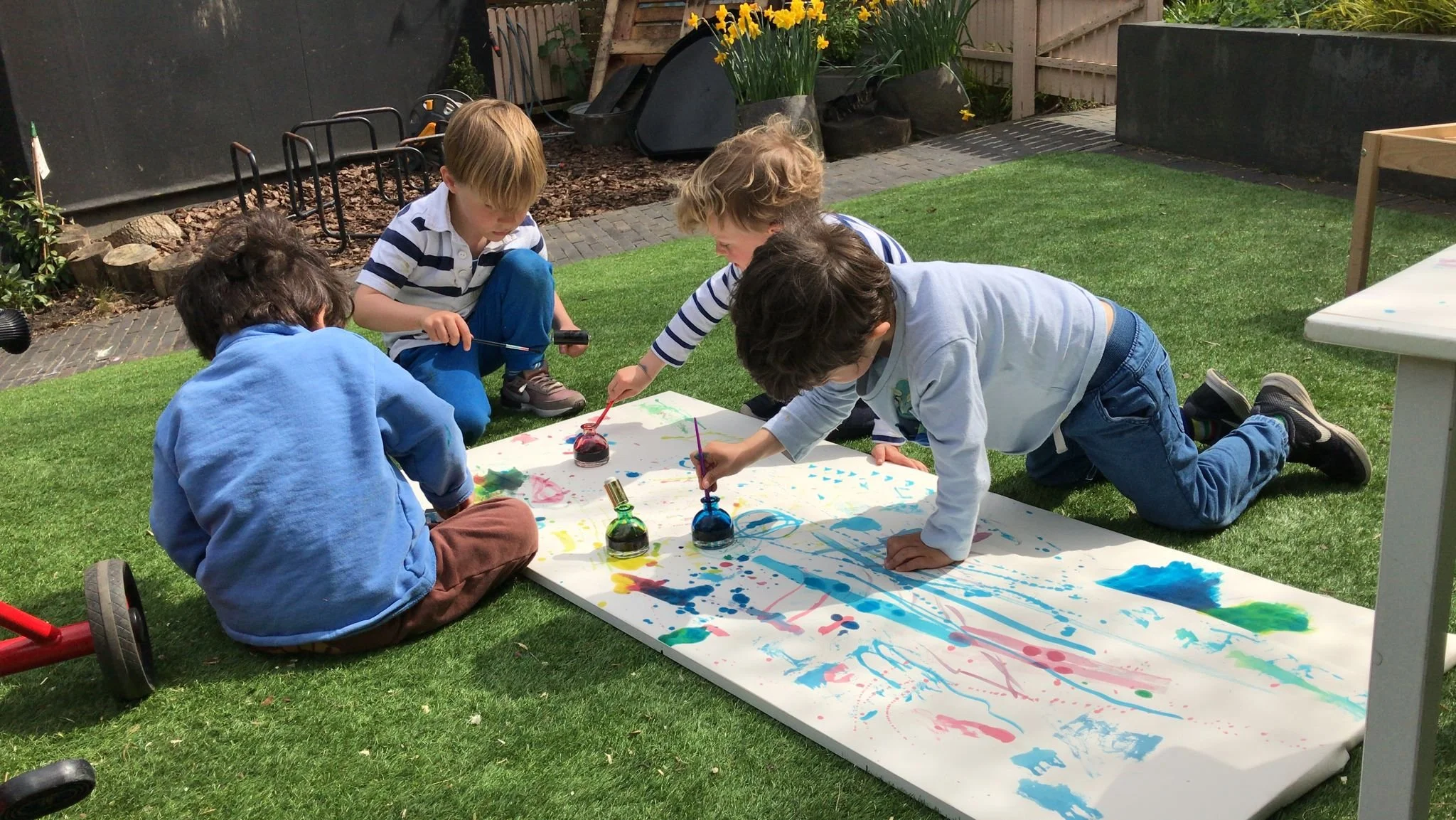The Playhood Blueprint for Early Years’ Education: Part 3
An introduzione to Reggio-Emilia!
Continuing our series on the ingredients for our children’s experience, the Reggio-Emilia approach deserves special mention because it is so complementary to the Montessori lifestyle that’s at the heart of Playhood. It’s provided fresh ideas for our practice, most noticeably in our successful seasonal atèlier weeks and approach to a collaborative community here. We will next month be discussing Forest schooling and this is also an intersection with Reggio-Emilia, which anchors firmly in the researching and creative exploration of our natural world, too.
***“There is an inner voice that pushes children on, but this force is greatly multiplied when they are convinced that facts and ideas are resources, just as their friends and the adults in their lives are precious resources”. (***Loris Malaguzzi, from the catalogue of the exhibition ‘The Hundred Languages of Children’, 1996.)
Allora!
The name refers to an area of Italy where a young educator worked with parents on experiential, play-based and self-directed learning for children. A teacher named Loris Malaguzzi, who’d grown up under fascist rule and took a keen interest in child psychology as important to the efforts to rebuild and rehabilitate after the Second World War, was inspired by the efforts of villagers to construct a school building collaboratively. He got involved in running the Villa Celli setting and through partnership with local parents opened many other preschools with progressive education principles reflecting the cultural shifts of the time. It was a local community movement that developed classroom programmes and activities as well as training.
The approach defines a child as active interlocutor and active subject; full of unique potential; finding expression and knowledge in “100 languages”. This intentional hyperbole provokes us to consider all the possibilities for play and research, and respect their value. The child “co-constructs” knowledge - what a wonderful frame for relationships, removing hierarchy, that builds from Vygotsky’s work discussed in a previous blog post here.
The ‘teacher’ is just one of the adults in a Reggio-Emilia environment, understood more as a co-learner, as mentioned. Alongside an educator, the Atelierista is a learning specialist akin to an artist-in-residence. A Pedagogista sits alongside to aid continuity of learning opportunities through projects and over the years, more a partner in theory and practice. The educator documenting visually all the time. They listen intently to the child’s voice and reflect back, using observation to inspire opportunities for further activities and study. Our educators at Playhood journal daily, share updates in multiple ways including incorporating voice notes from the children into the weekly debriefs for parents, which were already illustrated with photos and video. The documenting and processes of creative display enables transparency and deeper partnerships here because other educators and parents can so easily access the output.
The practice of respectful humility encouraging children to share their ideas and empowering their self-esteem very much extends to the families, with the participation of the parents completely normalised and encouraged. In fact there’s a flat structure to an R-E community: embracing everyone, connecting and contributing as the ‘team’. Mixed-age groups allow for consistency and strong relationships as the children stay with the educator for three years. At Playhood, our in-person presence and habits of reciprocity have created ideal conditions for communities just like those developed by Reggio-Emilia settings, very organically layering-in the parents, grandparents, neighbours and friends beyond the setting itself! Our foundational idea is minimising the gap between educational setting and home - sharing strategies and knowledge to welcome the children’s interests - valuing each others’ expertise and role.
The environment is a “fully participating element” of the complex interactions that shape educational experience, according to Malaguzzi. Hands-on learning and tangible experiences are highly valued. Reggio-Emilia spaces often feature natural tones and textures, plant-life, mirrors and windows galore: inviting exploration, stimulating yet calm. The tall Playhood studio windows look out at ground level, connecting the children at eye height with details of the garden and our door opens to a modest ‘piazza’ — our covered classroom which serves as a hub between the indoor and outdoor environments. The inclusion of a light-box, shelter spaces, natural wood, and all the flexibility we have over our layout, were design features built-in to the inside space to enable the kind of independent creative exploration we see flourishing here today!
“The wider the range of possibilities we offer children, the more intense will be their motivations and the richer their experiences”.
Malaguzzi in Edwards et al, ‘The Hundred Languages of Children’, p.54.
Montessori could be characterised as a more extensive and scientific pedagogy, but we are finding the Reggio-Emilia approach to be a harmonious challenge and build in our everyday activities and guiding philosophy, and hope you will join us in continuing to explore.
Inspiration & Reference:
Bringing the Reggio Approach to your Early Years’ Practice by Linda Thornton.
Introducing Malaguzzi by Sandra Schmidt.
A key account to follow: https://instagram.com/reggio_children?igshid=YmMyMTA2M2Y=
Beautiful review of design and architecture the approach has inspired: https://www.archdaily.com/944063/improving-the-educational-environment-with-the-reggio-emilia-approach?ad_medium=gallery
By Laura Perfetti & Georgia Norton.
Follow us on Insta @playhoodclub

